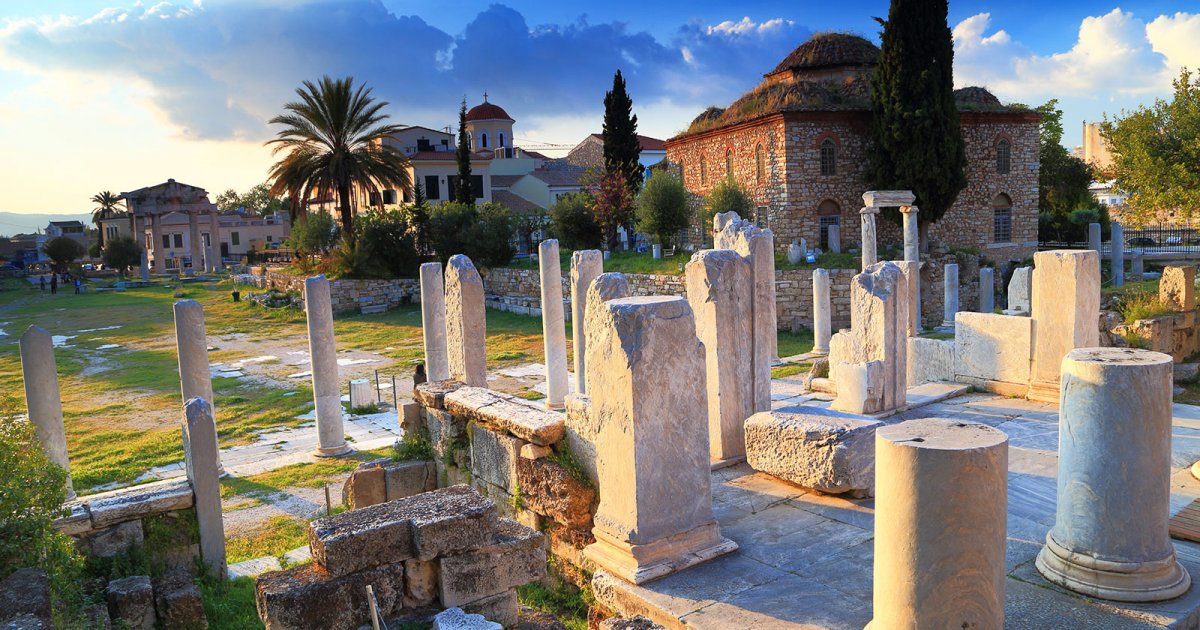AGORA, History
 Language: English / USA
Language: English / USA
Hi, my name’s Jill, and I’m your personal guide. Along with MyWoWo, I’d like to welcome you to one of the Wonders of the World: the Agora, the ancient square in Athens that was the cradle of Greek democracy during the Classical Period.
You may have heard of the Agora as the birthplace of democracy, where philosophers used to stroll around discussing their ideas, so the initial impact as you enter the archeological area might be a bit of a disappointment, because all you can see is a sort of huge garden without easily identifiable buildings. As you walk amid the ruins, however, a little imagination is all it takes to realize how complex its function was, and how bustling with activity it must have been.
The Greek term “agora” has multiple meanings, all of them linked to a space in which common activities are carried out: agora means gathering place, assembly; it was the place where the market was held, the place where citizens came together to listen to the orators and to deliberate on public affairs, the place where trials were held. It was the heart of everyday life in the city.
The huge building with columns at the entrance on your left is a stoa, or portico, but it’s a questionable modern reconstruction that houses the Agora Museum, and I’ll be talking about it in the last file.
Now press pause and turn right until you reach four pedestals with the remains of statues on them.
What you can see here is what remains of the Odeon, the covered theater built when Greece was conquered by the Roman Empire.
When Athens was free, this was an empty public space, used for meetings and social life. The building of the theater was ordered by Agrippa, the Roman general and right-hand man of the emperor Augustus – as you can see, culture can sometimes be a pretext for getting rid of a public space.
An interesting fact: have you ever wondered why some areas of ancient cities have remained visible to this day? This doesn’t really happen that often because generally, as cities grow, their history is wiped out and buried.
Until 1930, the area that is today occupied by the archeological area of the agora was just another part of Athens, indistinguishable from the rest. Some 400 houses had to be purchased and demolished for it to be brought to light.



